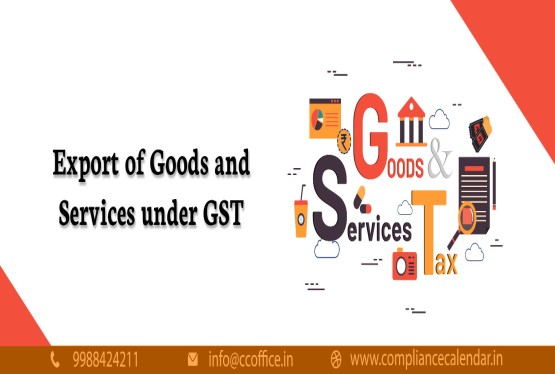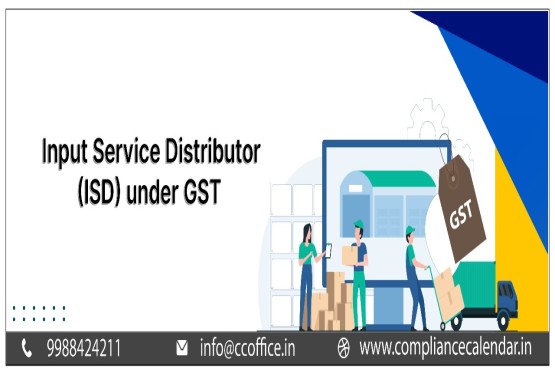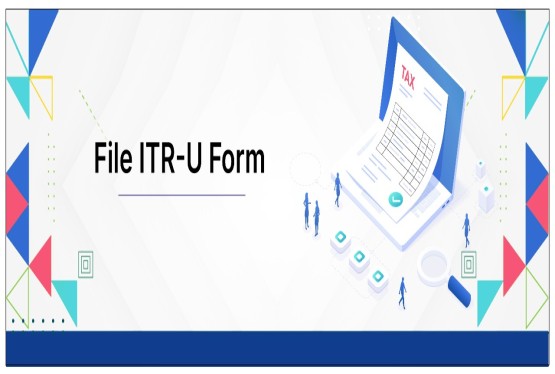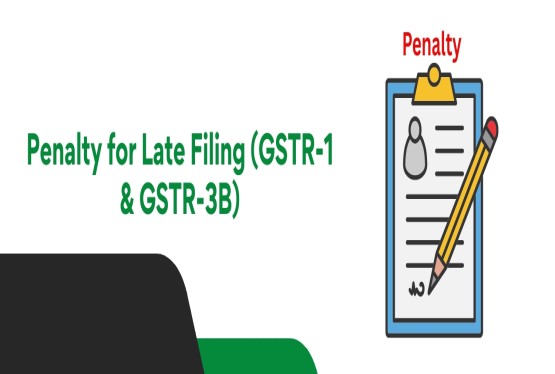In India, the taxation system forms the foundation of the country's economic structure. It helps the government raise revenue that is used to provide essential services such as education, healthcare, infrastructure development, national defence, and social welfare programs. Taxes in India are governed by the Constitution and enforced through laws like the Income Tax Act of 1961, the Goods and Services Tax Act, and various other legislation. India follows a federal tax system, which means both the central and state governments have the authority to levy and collect taxes. This article aims to explain all the important tax concepts in India, including income tax, GST, tax planning, tax exemptions, digital taxation, and compliance mechanisms.
Concept of Taxation in India
Taxation in India refers to the compulsory financial contribution imposed by the government on individuals, businesses, and organizations. These funds are utilized for national development and public welfare activities. The Indian tax system is broadly divided into two types: direct taxes and indirect taxes.
1. Direct taxes are imposed directly on the income, profits, or wealth of individuals and entities. These include income tax, corporate tax, capital gains tax, and others.
2. Indirect taxes are applied to the sale of goods and services. These are collected by intermediaries (like sellers) and passed on to the government. Examples include Goods and Services Tax (GST), customs duty, and stamp duty.
The Constitution of India divides the power to levy taxes between the central and state governments using three lists:
• Union List: Taxes like income tax (except on agriculture), corporate tax, customs duties, and excise duties are levied by the central government.
• State List: Taxes like land revenue, state GST, and property tax are under the control of state governments.
• Concurrent List: Some taxes like GST are collected by both central and state governments, with a clear mechanism to share the revenue.
The key objectives of taxation in India are:
• Revenue Generation: To fund government activities and infrastructure development.
• Wealth Redistribution: To reduce the gap between rich and poor by imposing higher taxes on the wealthy.
• Economic Regulation: To influence consumer behavior and promote specific sectors through tax incentives.
• Social Welfare: To support government welfare schemes for education, health, pensions, and poverty reduction.
Tax Administration in India
The administration of taxes in India is handled by various statutory bodies that operate under the Ministry of Finance and state governments.
• Central Board of Direct Taxes (CBDT): This body is responsible for managing direct taxes such as income tax and corporate tax. It works under the Department of Revenue, Ministry of Finance.
• Central Board of Indirect Taxes and Customs (CBIC): This body oversees the implementation and enforcement of indirect taxes like GST, customs duty, and central excise duty.
• State Governments: Each state has its own commercial tax department that manages State GST (SGST), stamp duties, registration fees, and other state-level taxes.
These authorities are responsible for framing rules, monitoring compliance, conducting audits, investigating tax evasion, and assisting taxpayers with returns and registrations.
Types of Taxes in India
India’s tax system is broadly categorized into two types: direct and indirect taxes.
Direct Taxes
Direct taxes are those which are paid directly by the individual or entity to the government. They are based on the principle of the ability to pay—those who earn more pay more. The key types of direct taxes include:
Income Tax
Income tax is levied on the income earned by individuals, Hindu Undivided Families (HUFs), firms, companies, and other entities. It follows a progressive tax slab structure, where higher income groups are taxed at higher rates. The Income Tax Act of 1961 governs the rules, exemptions, and deductions applicable.
Corporate Tax
This is a tax imposed on the net income of companies. Both domestic and foreign companies operating in India are subject to corporate tax. The tax rate depends on the turnover of the company and whether it is a domestic or foreign entity. Startups and small businesses are often provided with reduced rates and special incentives to promote entrepreneurship.
Capital Gains Tax
When a person sells a capital asset such as property, shares, or mutual funds, and earns a profit, this profit is taxed as capital gains. It is classified into:
• Short-Term Capital Gains (STCG): When the asset is held for a short duration (up to 36 months for real estate and up to 12 months for shares).
• Long-Term Capital Gains (LTCG): When the asset is held for a longer duration. LTCG has special tax rates and indexation benefits.
Securities Transaction Tax (STT)
STT is levied on the trading of securities on stock exchanges. This includes purchases and sales of shares, derivatives, equity-oriented mutual funds, and other securities.
Wealth Tax (Abolished)
Wealth tax was abolished in 2015. Earlier, it applied to individuals and HUFs having a net wealth above a certain threshold. Now, a surcharge is levied on high-income individuals instead.
Indirect Taxes
Indirect taxes are collected by an intermediary (like a seller or service provider) and paid by the consumer. These taxes are included in the price of goods and services.
Goods and Services Tax (GST)
GST is a unified indirect tax that replaced many central and state taxes like VAT, service tax, and excise duty. Introduced on July 1, 2017, it applies to the supply of goods and services across the country.
Key features of GST:
• Single Tax System: It replaced multiple taxes with one comprehensive tax.
• Value Added Tax: It applies only to the value added at each stage of the supply chain.
• Consumption-Based Tax: It is collected where the goods or services are consumed.
• Multi-Stage Structure: It includes CGST (collected by central government), SGST (collected by state government), and IGST (for interstate transactions).
GST rates are divided into five slabs: 0%, 5%, 12%, 18%, and 28%. Essential items like grains are tax-free or taxed at low rates, while luxury items are taxed higher.
Customs Duty
Customs duty is levied on goods imported into and exported from India. It helps regulate international trade and protect domestic industries.
Excise Duty
Excise duty was a tax on the production of goods within India. It has now been subsumed into GST, except for certain products like alcohol, tobacco, and petroleum.
Stamp Duty and Registration Fees
These are state-level taxes levied during the transfer of immovable property and the registration of legal documents. The rates differ from one state to another.
Income Tax: Basic Concepts
Income Tax is a direct tax that is a major source of revenue for the government. It applies to income earned from various sources such as salaries, business profits, capital gains, rental income, and interest.
Types of taxable income include:
• Income from Salary
• Income from House Property
• Income from Business or Profession
• Income from Capital Gains
• Income from Other Sources
Deductions and exemptions under income tax:
• Section 80C: Allows a deduction of up to Rs.1.5 lakh on investments in instruments like PPF, ELSS, NSC, and life insurance.
• Standard Deduction: A flat Rs.50,000 for salaried individuals and pensioners.
• Section 10(14): Exempts allowances like HRA and travel allowance.
• Capital Gains Tax: Gains from assets are taxed based on duration of holding. LTCG on shares above Rs.1 lakh is taxed at 10%, and STCG at 15%.
Tax Exemptions and Deductions
The Income Tax Act provides several exemptions and deductions to reduce the financial burden on taxpayers. These benefits encourage savings, investment in specific instruments, and insurance coverage.
• Exemptions: Some incomes like agricultural income and certain allowances (e.g., HRA) are tax-exempt.
• Deductions: Sections like 80C (investments), 80D (medical insurance), and 80E (education loan interest) allow reductions in taxable income.
These provisions are extremely beneficial for both individuals and businesses in managing their tax liabilities and planning finances efficiently.
Advance Tax and Self-Assessment Tax
When a person earns income beyond their regular salary (for example, from rent, capital gains, or business profits), they are required to pay taxes in advance during the financial year itself. This is known as advance tax.
If there is still a balance of tax left after TDS and advance tax, it must be paid as self-assessment tax before filing the Income Tax Return. These steps ensure timely tax collection and prevent last-minute financial burden.
Digital Transactions and Cryptocurrency Taxation
With the increasing use of digital platforms and virtual currencies, the government has introduced taxation rules for digital assets. Under Section 115BBH, income from the transfer of virtual digital assets (VDAs) such as cryptocurrencies and NFTs is taxed at 30%.
Key points:
• No deductions allowed except the cost of acquisition.
• Losses from VDAs cannot be adjusted against other income.
• This regulation brings clarity to digital financial transactions and prevents misuse.
Double Taxation Avoidance Agreement (DTAA)
DTAA is an agreement between India and other countries to prevent the same income from being taxed twice. This is beneficial for:
• NRIs: Who earn income in both India and abroad.
• Foreign companies: Operating in India.
• Indian companies: Expanding overseas.
India has DTAA treaties with many countries, allowing either tax relief or tax credit. This promotes international business and investment.
Concept of Tax Planning in India
Tax planning is the legal process of organizing one’s financial affairs to minimize tax liability. It plays an essential role in financial management for both individuals and businesses.
Key objectives of tax planning include:
• Reducing Tax Liability: By using available deductions and exemptions.
• Maximizing Savings: Lower tax means higher retained income.
• Achieving Financial Goals: Helps plan for retirement, education, property purchase, etc.
Common tax planning strategies:
• Investing in tax-saving instruments under Section 80C.
• Claiming exemptions like HRA, LTA, and standard deduction.
• Investing in tax-free income sources like government bonds.
• Managing capital gains using indexation and exemption provisions.
It is important to distinguish between tax planning and tax evasion. Tax planning is legal, while tax evasion (such as concealing income) is illegal and punishable by fines and imprisonment.
Tax Compliance and Filing
Timely and accurate tax compliance is a duty of every taxpayer in India.
• Income Tax Returns (ITR): Must be filed annually by individuals and businesses with income above the threshold.
• GST Returns: Regular filing is required for businesses under the GST regime.
• TDS (Tax Deducted at Source): Applicable on payments like salary, interest, or contract services. Businesses must deduct and deposit TDS and file returns.
Non-compliance may attract penalties and interest. Platforms like Compliance Calendar provide professional assistance for tax compliance, planning, return filing, and audits.
Conclusion
Taxation system of India is the backbone of its economic policies and development goals. Whether it is income tax or GST, knowing the tax concepts is essential for every citizen and business entity. With ongoing reforms, digitisation, and simplification efforts, the system is becoming more transparent and efficient. By staying compliant, taking advantage of deductions, and planning finances wisely, taxpayers not only reduce their liability but also contribute to nation-building.
If you need expert guidance on taxation, return filing, or compliance, reach out to Compliance Calendar for professional assistance through info@ccoffice.in or Call/Whatsapp at +91 9988424211.
FAQs
Q1. What are the main differences between Direct Taxes and Indirect Taxes in India, and can you give examples of each?
Ans. Direct taxes are levied directly on an individual's or entity's income, wealth, or assets, and are paid directly to the government. Examples include Income Tax, Corporate Tax, and Capital Gains Tax. Indirect taxes, on the other hand, are levied on goods and services, and are typically passed on to consumers through intermediaries. The primary example is the Goods and Services Tax (GST), as well as Customs Duty.
Q2. How has the implementation of the Goods and Services Tax (GST) impacted India's economy and tax system?
Ans. GST has revolutionized India's indirect tax landscape by consolidating multiple taxes into a single, unified system. It has simplified the tax structure, eliminated the cascading effect of "tax on tax," and boosted the economy by enhancing the ease of doing business. Key features include a dual structure (CGST, SGST, IGST), Input Tax Credit (ITC), and destination-based taxation.
Q3. What are the key features of India's Income Tax system, and what recent developments have been introduced to improve its administration?
Ans. India's Income Tax system is governed by the Income Tax Act of 1961 and is administered by the CBDT. It features taxable income, progressive tax slabs and rates, and various deductions and exemptions. Recent developments include faceless assessments and appeals to enhance transparency, the optional new tax regime, and increased digitalization of tax compliance through AIS and Form 26AS.
Q4. What are the corporate tax rates for domestic and foreign companies in India, and what is the Minimum Alternate Tax (MAT)?
Ans. Domestic companies have varying tax rates, with a normal rate of 22% for those opting for Section 115BAA and 15% for new manufacturing companies under Section 115BAB. Companies not opting for concessional rates are taxed at 30% (25% if turnover is below a specified threshold). Foreign companies are taxed at 40% on income earned within India. MAT is a tax levied on companies that avail tax exemptions or deductions, ensuring they pay a minimum tax of 15% on book profits if their total tax liability falls below the prescribed limit.
Q5. What are some of the key challenges that India's taxation system faces, and what steps are being taken to address them?
Ans. Key challenges include a high compliance burden, lengthy tax litigation and dispute resolution processes, and the prevalence of the informal economy and tax evasion. The government is addressing these challenges through initiatives like the proposed Simplified Direct Tax Code, alignment with global tax policies (BEPS compliance), and increased digitalization and AI in tax administration to enhance efficiency and transparency.









_crop10_thumb.jpg)

















































































_for_FY_2025-26_crop10_thumb.jpg)












_learn_crop10_thumb.jpg)








_Filing_Due_Dates_for_FY_2024-25_learn_crop10_thumb.jpeg)




































